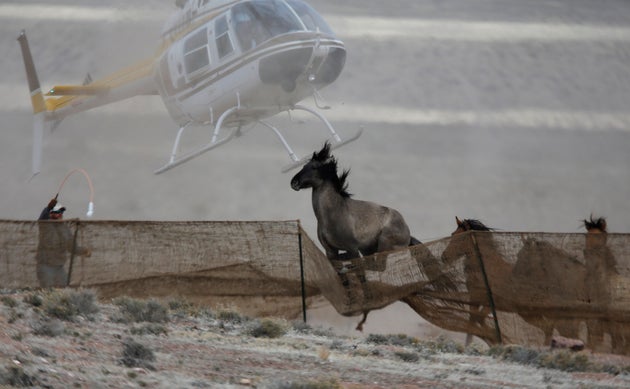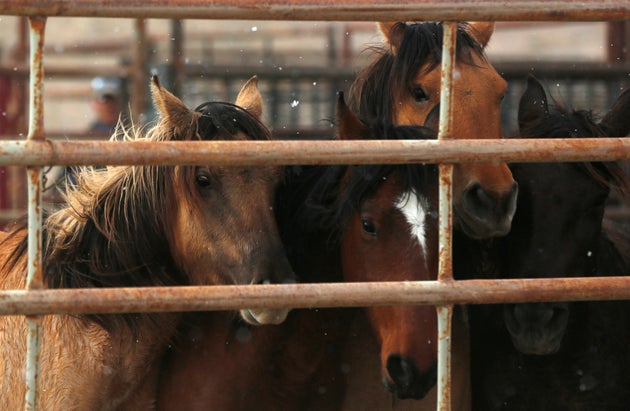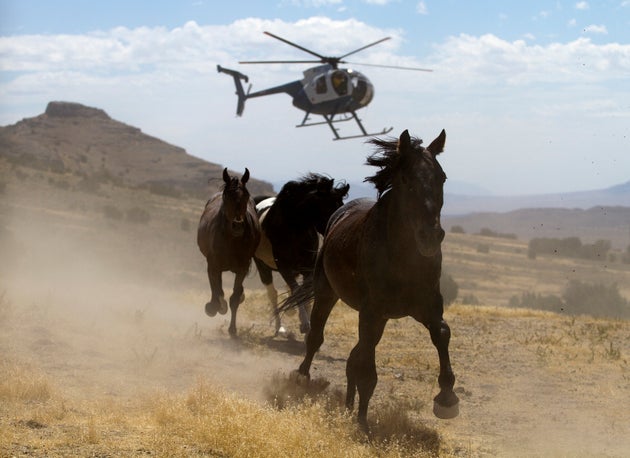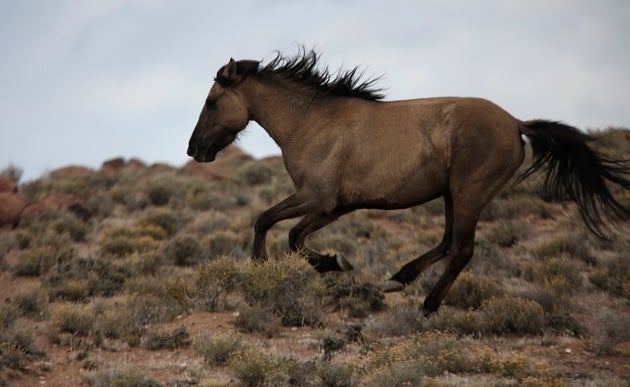“They have a commitment to these animals.”
Hilary Hanson
Viral News Editor, The Huffington Post
The Bureau of Land Management doesn’t plan to follow an advisory board’s recommendation to euthanize about 45,000 wild horses and burros that are currently in holding facilities, the agency said Thursday.
“Despite the recommendation, the BLM will not euthanize or sell without limitation any healthy animals,” agency spokeswoman Courtney Whiteman told The Huffington Post in an email. The BLM will issue a “formal response” at the next board meeting in spring 2017, she added.
Animal rights groups, including the Humane Society of the United States andIn Defense of Animals, condemned the recommendation the advisory group made last week, and said that accepting it would betray the BLM’s responsibility to the horses.
“They have a commitment to these animals,” Gillian Lyons, the HSUS’s Wild Horse and Burro Program manager, told HuffPost. “They took them off the range.”
Although some news outlets stated that the BLM or the “government” voted to euthanize the horses, this wasn’t true true. The National Wild Horse and Burro Advisory Board, an independent body that advises the BLM on matters pertaining to wild equines, made the recommendation.
Even if the BLM had accepted the plan, it would have taken some time for it to be implemented. The 2016 Interior Appropriations Bill prohibits using federal funds to send horses to slaughter or to euthanize healthy animals — meaning the language would have to be changed in the next bill for the recommendation to actually go through.
So many animals are in holding facilities because the BLM periodicallyrounds up wild horses and burros to remove them from public lands. The agency says this is to curb overpopulation and protect the environment, but critics accuse it of catering to the whims of cattle ranchers who want rangelands for themselves.
There were 44,111 wild horses and 1,080 burros in BLM holding facilities in July, according to the agency’s data. (By comparison, the agency estimated in March there were about 70,000 free-roaming horses and burros across 10 western states.)
Equine behaviorist Sue McDonnell, who sits on the National Wild Horse and Burro Advisory Board and voted for the euthanasia recommendation, said many of the horses are stuck in facilities that are inadequate for long-term care. She emphasized that she was speaking as an individual, not on behalf of the board.
“This is not a reasonable quality of existence they’re in,” she told HuffPost. “They’re basically in dry lot pens, there’s no natural vegetation. It’s not the way anyone would keep their horses, you know. Those are the horses right now.”
These facilities are dubbed “short-term corrals,” but McDonnell said that in most cases they are “not short-term.” However, she praised BLM’s efforts to house some horses on large pastures or in ecosanctuaries that tourists can visit. According to the July data, about 562 horses were in ecosanctuaries and 31,000 were in “long-term pastures.” About 13,000 horses and burros were in short-term corral
The BLM “adopts” out horses, but there just isn’t enough demand for the large number that the agency has. The board’s new recommendation, McDonnell said, also included a suggestion to remove some of the red tape involved in the adoption process to encourage more people to take in the animals. (The BLM maintains that its policy is not to sell to “kill buyers” that send horses to slaughter, although they were documented in recent years doing exactly that.)
McDonnell said she considers the recommendation to be less of a demand for euthanasia, and more of a cry for help because the horses are in a desperate situation.
Criticisms of how the BLM manages wild horses will likely remain. Numerous animal welfare groups have vehemently opposed BLM’s roundup-and-remove strategy, which involves chasing down animals with helicopters — sometimes leading to horse injuries or deaths — and often separating strongly bonded social groups.
That said, even the HSUS concedes that having too many horses under the wrong conditions can lead to problems. Horse overgrazing can quickly deplete the food supply, especially in drier areas, and make way for invasive plant species that provide poor nutrition and destroy native vegetation.
Some advocates, including Lyons, argue in favor of implementing widespread fertility control — specifically, a vaccination known as PZP.
PZP faces some criticism — both from skeptics like McDonnell, who cited the difficult logistics of administering it to far-reaching, hard-to-access horse populations, and advocates who believe the drug could be harmful. However, it has garnered the support of the National Academy of Sciences, which referred to it as one of the most promising fertility-control methods available in a 2013 report.
This article has been updated to reflect that the BLM has responded to the advisory board’s recommendation.
___
http://www.huffingtonpost.com/entry/blm-kill-wild-horses_us_57d873d4e4b09d7a68806792




